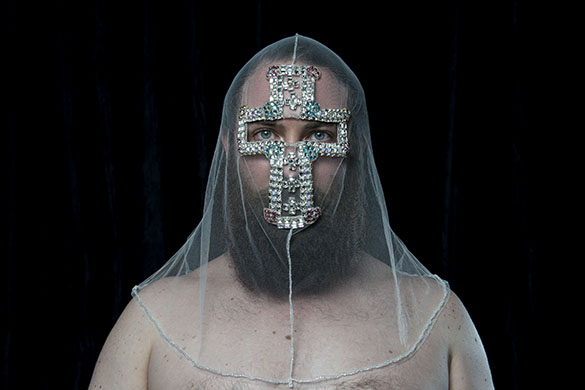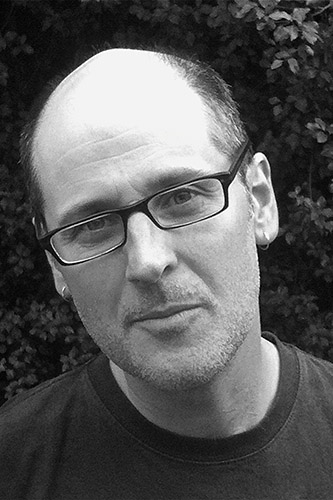
The release last week of Kazuo Ishiguro’s novel The Buried Giant, his first in a decade, has sparked an exchange between the author and the venerable science-fiction and fantasy writer Ursula Le Guin. The point at issue was Ishiguro’s apparent reluctance to embrace wholeheartedly the term ‘fantasy’ as a descriptor of his novel, even though it has obvious affinities with the genre. Le Guin took particular exception to Ishiguro’s remark in a New York Times interview that he was worried readers might not look beyond the ‘surface elements’ of his fantastic tale. She interpreted this as an expression of disdain for fantasy writing and wrote a rather testy blog post in which she accused him of displaying a ‘thoughtless prejudice’, posting a conciliatory addendum after Ishiguro expressed his surprise at her response and affirmed that he was ‘on the side of the pixies and dragons’.
As novelist Stephen Marche argues in Esquire, there is something a bit old-fashioned about this argument (to the extent that it was an argument and not simply two writers talking at crossed purposes). There are, Marche points out, any number of contemporary novelists of a ‘literary bent’ who make overt use of the conventions of genre fiction: so many, in fact, that ‘the forms of genre – science fiction, fantasy, the hardboiled detective story, the murder mystery, horror, vampire, and werewolf stories – have become the natural homes for the most serious literary questions’.
I have always found the turf war between so-called ‘literary’ and ‘genre’ fiction to be an oddly frustrating affair. It seems to me that it is not merely unproductive, but somewhat askew: a dispute in which people are apt to treat fuzzy distinctions as sharp, and thus end up patrolling fences that are largely imaginary. Le Guin, for example, felt compelled to point out that fantasy is an ancient and respectable way of talking about reality, and that there are what she calls ‘plausible impossibilities’ in many recognised classics, including The Odyssey, Beowulf and Alice in Wonderland. Who denies this? (Furthermore, she was directing her comments at an author who has just published a book that features dragons and ogres.) Blanket dismissals of generic writing are indeed undesirable and ultimately untenable, but at the same time I don’t think it necessarily makes people ‘idiots or snobs’ (to use Marche’s terms) if they come to the conclusion that there is a lot of boringly formulaic genre fiction out there that is not in the least bit concerned with ‘the most serious literary questions’, let alone ‘grand philosophical questions’. The penny dreadful is still very much with us; it’s just that these days it costs around 30 bucks.
One of the principle reasons these kinds of arguments are unproductive, I think, is that they tend to assume that there is some kind of clear and meaningful opposition between ‘genre’ fiction and so-called ‘literary’ fiction. This is true even when – as in Marche’s case – the intention is to argue for the unimportance of that distinction, to assert that there are only ‘stupid books and smart books … well-written books and badly-written books’. Marche, in other words, does precisely what Le Guin saw Ishiguro as doing: he reinstates a spurious opposition in the name of overthrowing it. The underlying problem is that the term ‘genre’ refers to a set of recognisable formal properties that might allow us to categorise a particular work, whereas the term ‘literary’ his no such specific meaning. It is an elastic term that is not only used in a very loose fashion, but which embraces works in many different styles and genres. This is perhaps why Marche, in order to claim that genre fiction has captured the literary heights, feels obliged to reverse-engineer a vanquished foe, to give a generic specificity to the literariness that has supposedly been displaced, settling on (what else?) the pinched and battered figure of ‘literary realism’ – or more specifically the kind of ‘straight literary novel’ exemplified by recent works such as Jeffrey Eugenides’ The Marriage Plot and Jonathan Franzen’s Freedom (both of which are indeed flawed novels that are notionally realist, but which are also self-reflexively concerned with their status as realist novels, and thus perhaps not quite as ‘straight’ as Marche claims).
Marche claims that ‘there is no outside of genre anymore’. But there never really was. All writing partakes of generic conventions in one way or another. And the conflation of ‘literary’ fiction with realism not only serves to muddy the water, it makes no sense (I am assuming the likes of Franz Kafka, José Saramago and Angela Carter qualify as ‘literary’). At the bottom of this question is an issue of cultural assumptions and prejudices, not form as such. This is at the root of Ishiguro’s original remark, as well as Le Guin’s reaction. She resents having her work pigeonholed and prejudged; he wants to avoid having his work pigeonholed and prejudged. Fair enough. Works should not be prejudged on the basis of genre. Perhaps, as we farewell Terry Pratchett (this 2011 interview with Romona Koval is worth reading), that is one thing we can all agree on.
*
In light of all this, it is a neat coincidence that Sydney Review of Books should this week feature an essay on the work of Fredric Jameson, an influential thinker best known as a theorist of postmodernism, who has in his most recent work turned his attention to the question of realism in literature. In ‘As opposed to what?’, Adam Heron finds that this surprising shift in emphasis allows for a retrospective interpretation of Jameson’s formidable body of work:
Jameson aims ‘to come at realism dialectically’ and he demonstrates again that he is one of the great contemporary dialectical thinkers. The Antinomies of Realism contains many surprising and enlightening passages: on the importance of competing temporalities; on the difference between emotion and affect; on the significance of Émile Zola’s naturalism (by an passionate exegetist of Georg Lukács!); on the renewal of historical realism by Hilary Mantel and David Mitchell (by a wary critic of E.L. Doctorow!). Perhaps most significantly, Jameson insists that aesthetic realism is best thought of as a process.
Our second essay looks at the latest book by the eminent American historian and political commentator Garry Wills. In ‘Invisible ghosts’, Peter Craven examines Wills’ Making Make-Believe Real: Politics as Theater in Shakespeare’s Time, and finds its attempt to make sense of the resplendent culture of Elizabethan England to be deeply flawed:
It is a worry that Wills, who has written so wisely and brilliantly about the politics of America over the decades, is so flatfooted when it comes to this kind of thing, so that when he tilts at William Hazlitt and Harold Bloom (whose personal best is his account of Falstaff), he seems not like Quixote imagining giants, but like a Sancho Panza who has somehow stumbled into terrain where there are giants indeed, though not visible to him.
From the Archives this week looks back at one of Sydney Review of Books’ most read essays from 2013. In ‘Quand Même’, Joshua Mostafa examines the work of another influential contemporary thinker, Emily Apter, and specifically her concept of the ‘Untranslatable’: a word or other semantic unit that cannot easily be rendered from one language to another, an ‘intransigent nub of meaning that triggers endless translating in response to its resistant singularity’.
Our image this week comes from Sydney based performance artist Liam Benson who will be part of a panel discussion with Artereal Gallery Director Luisa Catanzaro, MCA curator Anna Davis and Studio Director and art collector Sean Morris. Details on the Artereal website.
